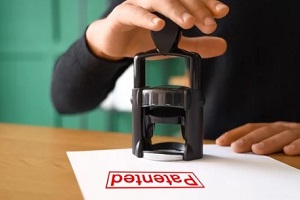 Obtaining a patent for an invention can secure exclusive rights for inventors and protect the hard work and expense involved in developing new products and ideas. However, it is a complex process that requires considerable time and patience. Here is a look at the steps involved in obtaining a patent.
Obtaining a patent for an invention can secure exclusive rights for inventors and protect the hard work and expense involved in developing new products and ideas. However, it is a complex process that requires considerable time and patience. Here is a look at the steps involved in obtaining a patent.
Finalize The Invention
When an invention is still in the idea stage, it is not possible to obtain a patent for it. While having a full-fledged commercial prototype is not necessary, it is important to understand the implementation of the invention as well as its strengths. For the patent application, inventors will be required to define the invention’s purpose and explain what it does and how it works.
Determine If It Is Patentable
Although an inventor may not have seen anything like their invention before, that does not mean that it is patentable. First, the invention must be novel as well as something that is not considered obvious by those who are familiar with its subject matter. Keep in mind that laws of nature, natural phenomena and abstract ideas cannot secure patents.
A novelty search, or patent search, must be carried out to assess which prior inventions and products already exist in the public domain. A patent attorney can help with this process as their scientific knowledge enables them to understand the unique characteristics of the invention and any elements it contains that could pose challenges during the patent application process.
Prepare To File The Patent Application
 Next, the inventor should work with a patent attorney to prepare to file their application. Most patents will fall under one of two categories: a utility patent or a design patent.
Next, the inventor should work with a patent attorney to prepare to file their application. Most patents will fall under one of two categories: a utility patent or a design patent.
A utility patent aims to protect the way the invention works and is used. For a utility patent, a provisional application can be filed which is valid for one year. This acts as a placeholder that enables the inventor to claim a status of “patent pending” as they prepare their full application. Once the year has concluded, the inventor will be required by the U.S. Patent and Trademark Office (USPTO) to file a non-provisional application, or they could lose their patent rights.
Alternatively, many inventors will choose to file a non-provisional patent application. Although this must adhere to a strict format and is more detailed, it will be valid for 20 years from the date it is filed. The application includes a detailed disclosure of an invention and a claim or series of claims related to it.
A design patent application is the right choice for protecting the design elements of an invention. This will protect the unique visual qualities of manufactured items. To be eligible for a design patent, the product must have a distinct surface ornamentation and/or a distinct configuration.
If granted, a design patent will prevent others from making, copying, using or importing items that are substantially similar in design. Even designs that were not intended to be copied and were devised independently from the patented design could still be considered as infringements on the design patent.
Submit The Initial Patent Application
After the patent application has been filled out completely, the invention will enter the official USPTO patent process. The application involves forms, drawings and specifications.
Inventors will also be required to pay USPTO filing fees. A failure to complete the documentation or pay the fee will cause the application to be stalled until all of these matters are resolved.
Wait For The Patent Examination Process
 After the application has been filed, inventors must wait for the USPTO to review it and respond with an approval or denial. The USPTO does not have an official set period of time for responding to patent applications.
After the application has been filed, inventors must wait for the USPTO to review it and respond with an approval or denial. The USPTO does not have an official set period of time for responding to patent applications.
After an application has been accepted by the USPTO as complete, they will assign an examiner to review the drawings and specifications and carry out a thorough patent search. If the examiner does not believe the invention is novel or has an issue with the claims, the inventor will be given the chance to counter their objections or make amendments.
Because each application is unique, it is difficult to predict what type of challenges it could encounter during the examination process. Although patent applications that have been drafted carefully with help from experienced patent attorneys may get through the process easily, those for inventions in competitive fields could still receive an office action which requires a response.
Maintain The Patent
The final step is widely considered the most important part of the patent process: maintaining the patent. Inventors must pay maintenance fees from time to time throughout the lifecycle of the patent or they could lose some rights or see their patent expire.
Work With The Experienced Washington, D.C. Patent Law Attorneys
The patent application process can be complicated, but working with patent law attorneys can help inventors understand the process. Contact the intellectual property attorneys at Metrolex IP by calling (202) 828-1008 or schedule a consultation today and find out how to protect your invention.

